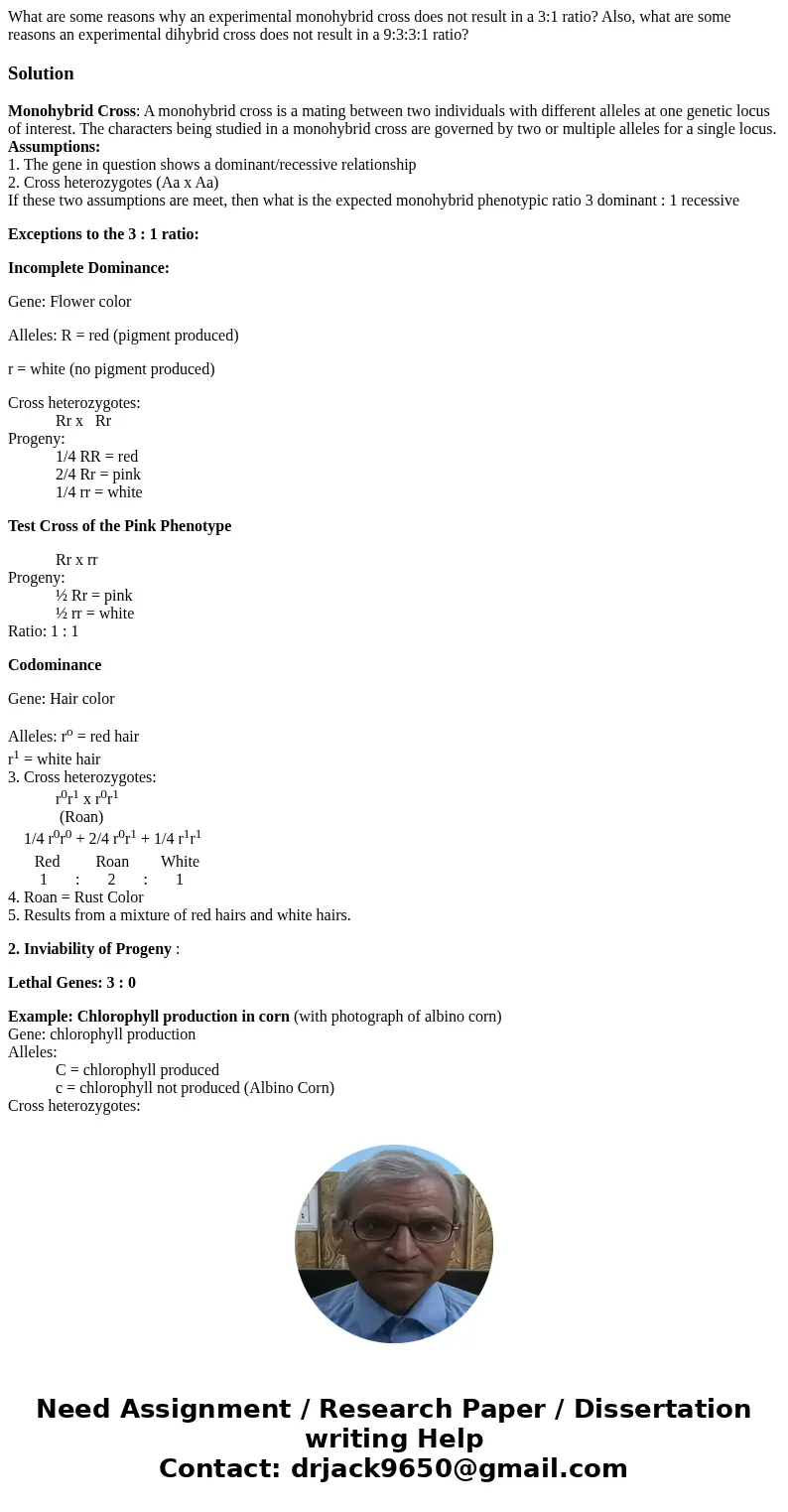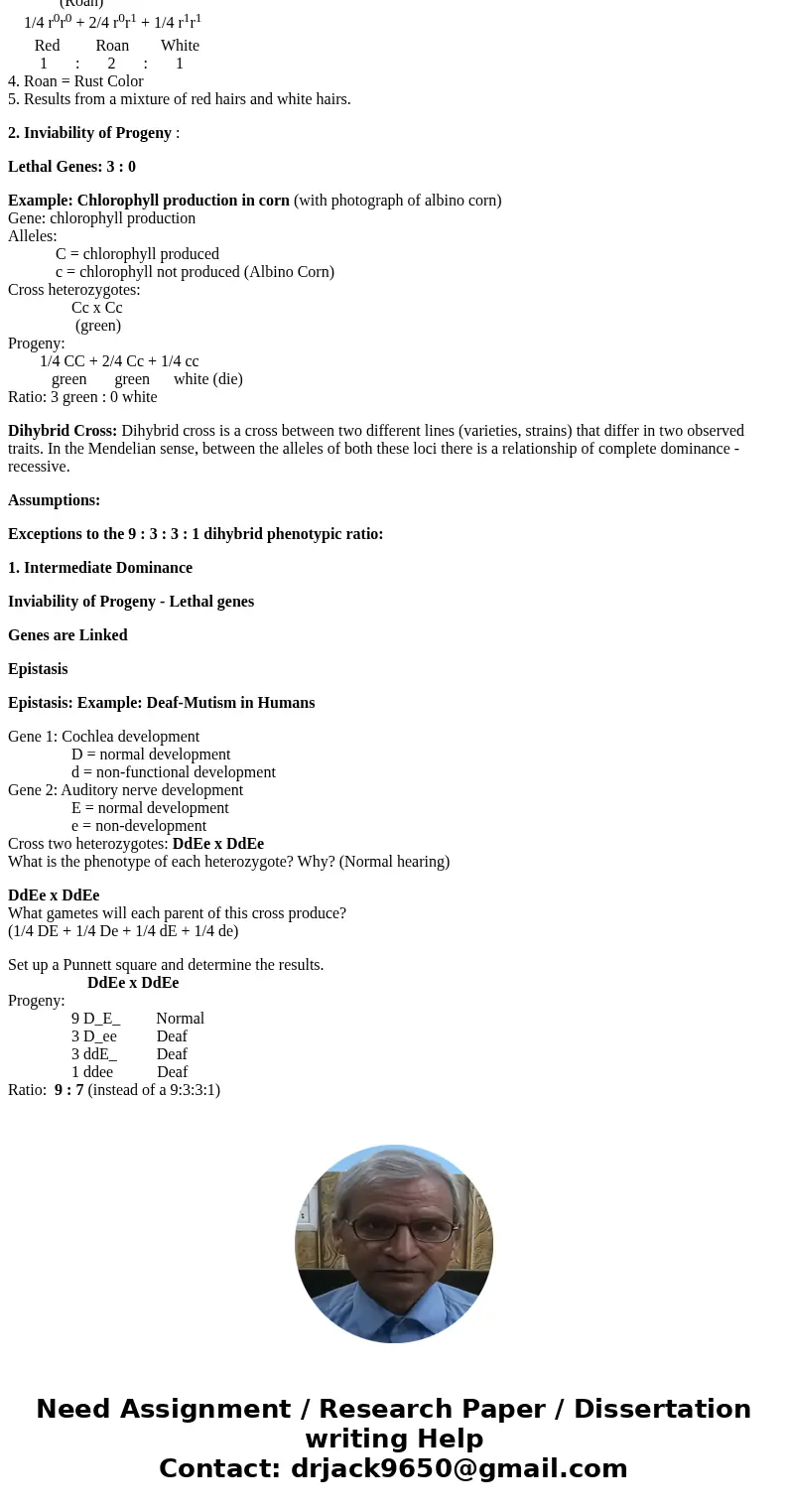What are some reasons why an experimental monohybrid cross d
What are some reasons why an experimental monohybrid cross does not result in a 3:1 ratio? Also, what are some reasons an experimental dihybrid cross does not result in a 9:3:3:1 ratio?
Solution
Monohybrid Cross: A monohybrid cross is a mating between two individuals with different alleles at one genetic locus of interest. The characters being studied in a monohybrid cross are governed by two or multiple alleles for a single locus.
Assumptions:
1. The gene in question shows a dominant/recessive relationship
2. Cross heterozygotes (Aa x Aa)
If these two assumptions are meet, then what is the expected monohybrid phenotypic ratio 3 dominant : 1 recessive
Exceptions to the 3 : 1 ratio:
Incomplete Dominance:
Gene: Flower color
Alleles: R = red (pigment produced)
r = white (no pigment produced)
Cross heterozygotes:
Rr x Rr
Progeny:
1/4 RR = red
2/4 Rr = pink
1/4 rr = white
Test Cross of the Pink Phenotype
Rr x rr
Progeny:
½ Rr = pink
½ rr = white
Ratio: 1 : 1
Codominance
Gene: Hair color
Alleles: ro = red hair
r1 = white hair
3. Cross heterozygotes:
r0r1 x r0r1
(Roan)
1/4 r0r0 + 2/4 r0r1 + 1/4 r1r1
Red Roan White
1 : 2 : 1
4. Roan = Rust Color
5. Results from a mixture of red hairs and white hairs.
2. Inviability of Progeny :
Lethal Genes: 3 : 0
Example: Chlorophyll production in corn (with photograph of albino corn)
Gene: chlorophyll production
Alleles:
C = chlorophyll produced
c = chlorophyll not produced (Albino Corn)
Cross heterozygotes:
Cc x Cc
(green)
Progeny:
1/4 CC + 2/4 Cc + 1/4 cc
green green white (die)
Ratio: 3 green : 0 white
Dihybrid Cross: Dihybrid cross is a cross between two different lines (varieties, strains) that differ in two observed traits. In the Mendelian sense, between the alleles of both these loci there is a relationship of complete dominance - recessive.
Assumptions:
Exceptions to the 9 : 3 : 3 : 1 dihybrid phenotypic ratio:
1. Intermediate Dominance
Inviability of Progeny - Lethal genes
Genes are Linked
Epistasis
Epistasis: Example: Deaf-Mutism in Humans
Gene 1: Cochlea development
D = normal development
d = non-functional development
Gene 2: Auditory nerve development
E = normal development
e = non-development
Cross two heterozygotes: DdEe x DdEe
What is the phenotype of each heterozygote? Why? (Normal hearing)
DdEe x DdEe
What gametes will each parent of this cross produce?
(1/4 DE + 1/4 De + 1/4 dE + 1/4 de)
Set up a Punnett square and determine the results.
DdEe x DdEe
Progeny:
9 D_E_ Normal
3 D_ee Deaf
3 ddE_ Deaf
1 ddee Deaf
Ratio: 9 : 7 (instead of a 9:3:3:1)


 Homework Sourse
Homework Sourse